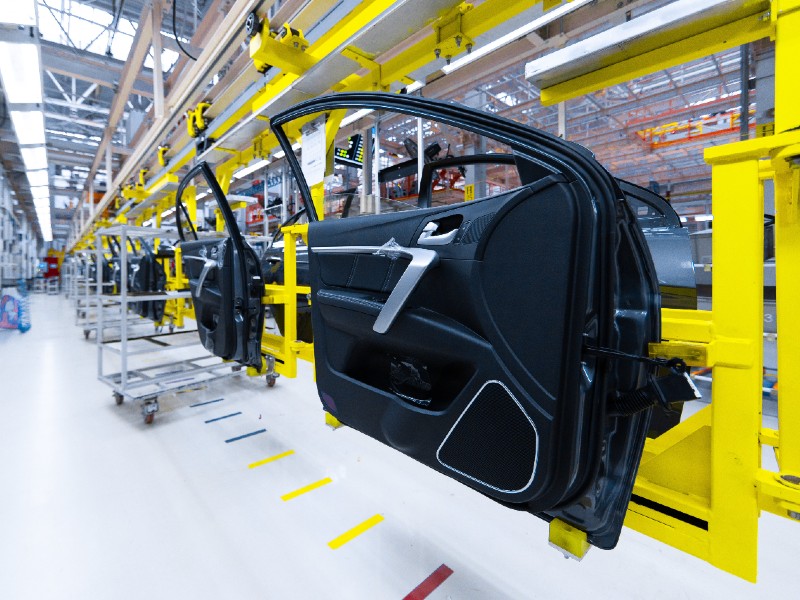Africa is witnessing a rise in local vehicle production as major automotive manufacturers expand existing plants and set up new facilities across the continent.
A recent report by Modor Intelligence, titled “Africa Automotive Market Size & Share Analysis – Growth Trends & Forecasts (2025 – 2030)”, highlights South Africa, Morocco, and Egypt as the leading car-producing nations. These countries are experiencing rapid growth in their automotive industries, driven by progressive government policies and increased manufacturing investments.
The shift towards electric vehicle production and Africa’s rich deposits of green metals further boost this expansion. This trend presents a major opportunity for African markets to increase the number of new cars on the continent’s roads while also enhancing exports to global markets.
“Several countries are witnessing major developments in their automotive manufacturing capabilities, with new assembly plants and production facilities being established to meet the growing demand,” according to the report.
In South Africa, the automotive industry is achieving new production milestones, with expansions of existing plants and the development of new manufacturing facilities shaping the market’s growth.
By the end of 2024, Volkswagen Africa Group (VWAG) announced a new production record of 167,084 vehicles in a single year at its Kariega plant—the sole exporter of the popular Polo to Europe and the Asia-Pacific region. This marks the plant’s highest output since the first Beetle rolled off its production line 73 years ago.
The new figure surpasses VWAG’s previous record of 161,954 vehicles, set in 2019.
Of the total produced, 131,485 units were exported—an increase from the previous export record of 108,422 vehicles in 2019—further solidifying South Africa’s role as a key player in global automotive exports.
“As of July 2024, VWGA is the sole exporter of the Polo for European and Asian Pacific markets, delivering this model to 38 countries. Overall, these Polos accounted for 88% of exported vehicles through the Port of Port Elizabeth last year,” said VWGA Chairperson and Managing Director, Martina Biene in a statement.
The Polo also performed strongly in the South African market in 2024, selling 12 253 units and garnering a 4th position in the segment, while the locally-built Polo Vivo claimed the top spot in the segment with 25 914 units sold.
In April 2024, VWGA announced a US$ 215.9 million ( R4 billion) investment into the Kariega Plant for the introduction of a third model, to be built alongside the Polo and Polo Vivo from 2027.
Stellantis is also building a manufacturing facility at Coega Special Economic Zone in Gqeberha expected to start production of a new auto model to roll off the assembly-line by the end of 2025.
BMW Group South Africa started the production of the next-generation BMW X3 at its Rosslyn Plant for global export on October 2024,making it the only facility in its global production network to build the new vehicle model as a plug-in hybrid vehicle (PHEV).
Hyundai South Africa is also readying to introduce its facelifted models like Tucson and Santa Fe SUV in 2025.
South Africa, through its Automotive Masterplan (SAAM) for the years 2021 to 2035, aims to increase the country’s global vehicle production by 1% each year until 2035, and achieving a localization rate of 60%.
According to the mordor report, South Africa continues to dominate the African automotive landscape, commanding approximately 40% of the continent’s total automotive market in 2024.
In Egypt , Morocco and Algeria, a focus on developing local manufacturing capabilities is helping North Africa market to attract investments from international automotive manufacturers.
“The market(Egypt) is witnessing a notable shift towards electric and hybrid passenger vehicles, supported by government incentives and the development of charging infrastructure,” said the report.
In December 2024, Nissan Egypt signed a US $45 million investment deal with Egyptian government to locally manufacture a third vehicle model that its yet to disclose. By close of 2025, the company aims to exceed a production capacity of 30,000 units annually in the country.
In Morocco, the automotive sector growth, was headlined by start of production of Dacia Jogger, the first hybrid vehicle manufactured in Renault’s plant in Tangier.
Moroccan car manufacturer Neo Motors also opened its first showroom in Rabat that same month and in November 2024, Romanian automotive supplier MP Industry Group inaugurated its first factory in the country.
In early January 2025, Aptiv, a US-Irish automotive technology supplier, established a production facility in Morocco with an investment of US $45 million.

Around the same time, Stellantis announced plans to launch a National Engineering Hub in Algeria- to nurture talent and technology, as well as host international supplier conventions to encourage Algerian manufacturers to engage in automotive subcontracting.
Stellantis stated that this effort will play a crucial role in shaping the country’s automotive industry.
“Stellantis aspires to foster the emergence of a local supplier network that can cover 30% of the content of vehicles produced at Tafraoui by 2026, thereby establishing, in Algeria, the first integrated automotive ecosystem,” said Chief Operating Officer at Stellantis Middle East and Africa, Chief Operating Officer, Samir Cherfan in a statement.
The Japanese automaker, Nissan, with wholly owned manufacturing plants in Egypt and South Africa, has also been pushing to expand its export market for its built in South Africa car, the Navara.
In 2024, the company ran a campaign dubbed ‘Nissan Daring Africa 2024’, an overland expedition that targeted Mozambique, Zimbabwe, Zambia, Malawi, Tanzania, Kenya and Egypt.
The Democratic Republic of Congo (DRC) is emerging as one of Africa’s most promising automotive markets, with a projected growth rate of approximately 8% from 2024 to 2029.
Key factors contributing to this growth include rising consumer purchasing power, the government’s commitment to developing infrastructure and implementing supportive policies, and the country’s rich mineral resources—particularly those essential for electric vehicle batteries.
In addition to the DRC, countries such as Nigeria, Ghana, Kenya, Angola, Tanzania, Tunisia, Ethiopia, and Libya have been listed also among markets that offer diverse production opportunities- exhibiting varying levels of development, regulatory frameworks, and consumer preferences.
“Countries like Ghana and Kenya are emerging as potential automotive manufacturing hubs, implementing policies to attract investments and develop local assembly capabilities,” said the report.
The rising production records, the report said are bolstering Africa’s new vehicles segment that is emerging as the fastest-growing segment in the Africa automobile market,with strong growth potential through 2024-2029, especially in Morocco and South Africa.
“The growth is further accelerated by improving economic conditions, rising consumer purchasing power, and the increasing availability of vehicle financing options in key markets” said the report.
By Conrad Onyango, bird story agency


